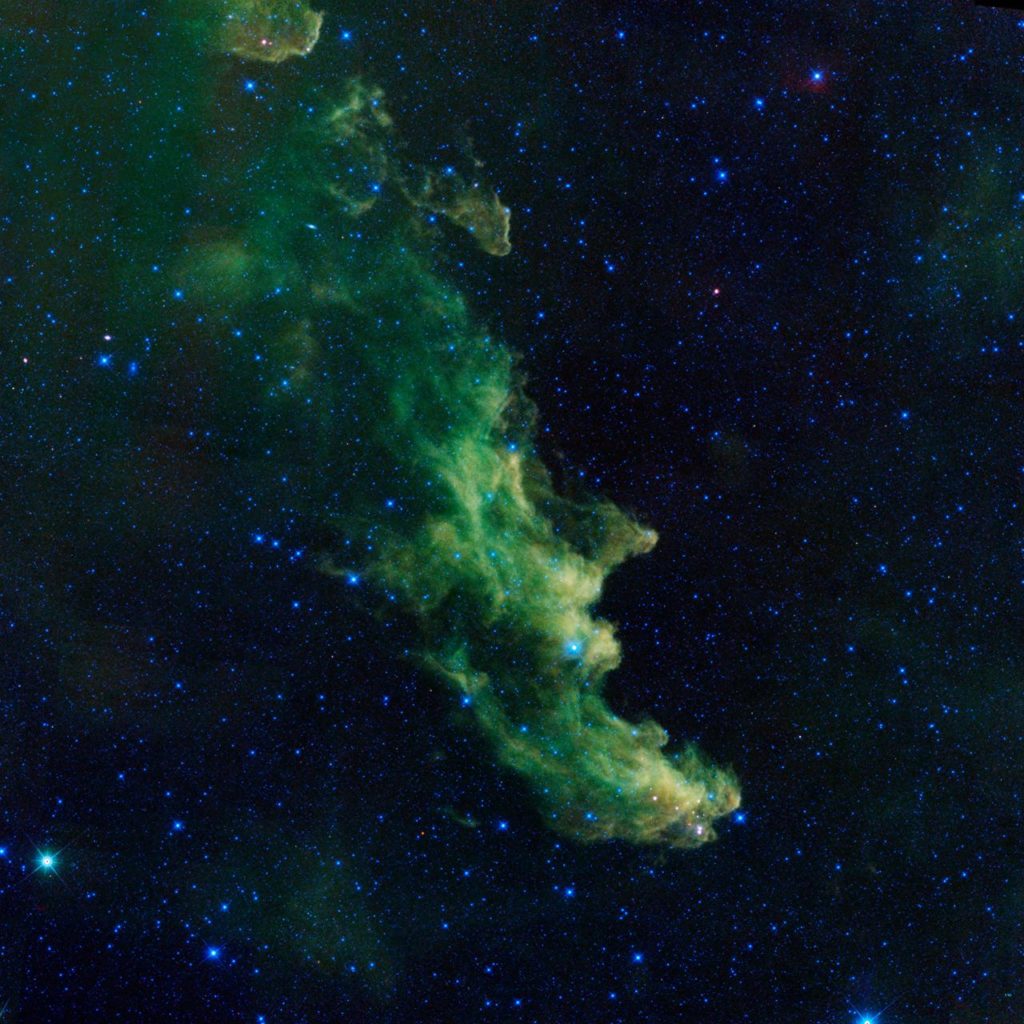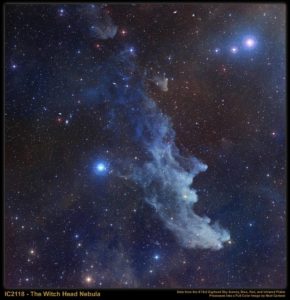
Image Credit: NASA
Pareidolia—it’s a phenomenon most of us experience at some point but is fortunately not as nefarious as its name sounds. It simply describes the human tendency to recognize familiar patterns or meanings where they don’t actually exist. It’s why some people see Mickey Mouse in the clouds or President Lincoln on a piece of toast. In the night sky, pareidolia triggered a certain Flagstaff astronomer to perceive waterways on Mars, while other people see a man on the Moon, a bear among the stars, and a variety of other familiar outlines in the stars and nebulae spread across the universe. Iconic celebrations like Halloween lend themselves to their share of examples, including ghost heads, black cats, and pumpkins. One of the more captivating of these is the Witch Head Nebula, an eerie cloud of cosmic dust that strongly resembles a witch in profile.
Formally identified in astronomy circles by the catalog designation IC 2118, the Witch head is not visible to the unaided eye. It wouldn’t even be visible through a telescope if not for reflected starlight, similar to how the Moon is visible from Earth because of reflected sunlight. Astronomers classify the Witch Head as a reflection nebula—a cloud of interstellar dust that reflects light from one or more nearby stars. We can think of such a thing as a celestial street light illuminating the clouds. In this case, the light comes from Rigel, the brightest star in the constellation Orion and the 7th brightest in the night sky (in the accompanying image, Rigel is out of the picture to the right). The distance from Earth to both Rigel and the Witch Head is about 900 light years.

IC2118- Witch Head Nebula
Color images of the Witch Head show it to be blue. This is partly because Rigel is blue and also because the nebula’s dust grains reflect blue light better than other colors, such as red. This is the same reason why Earth’s sky appears blue. The Witch Head is near the border of the constellations Orion and Eridanus. Many astronomers think it is likely the remnant of a supernova, gas left over from the explosion of a massive star in its final stages of life. Evidence also suggests that it may contain a stellar nursery, where young stars are forming.
German astronomer Max Wolf first noted the presence of the Witch Head, writing in 1909 that he detected traces of it 1891. He wrote,
“The nebula is composed of several streams of nebulosity, and has the appearance of foggy clouds driven by a fresh breeze.”
By 1909, the object remained enigmatic to the astronomy community, and Wolf acknowledged that he didn’t know if other astronomers had seen it or not.
Edwin Hubble, of expanding universe fame, first identified Rigel as the illuminating star. Not until 1927 did the nebula pick up the nickname “Witch Head Nebula”, when American astronomer Frank Ross suggested it.
Today, the Witch Head would probably be unknown outside of astronomy circles if not for modern photography techniques that allow for spectacular imaging. With Halloween just around the corner, it’s a timely example of pareidolia and the many shapes we imagine when looking at the sky.